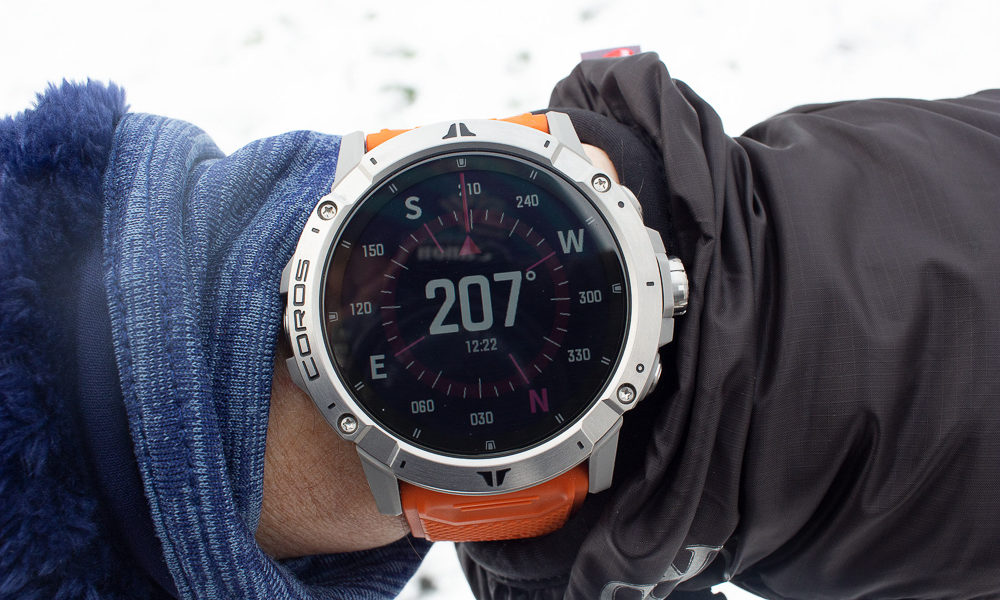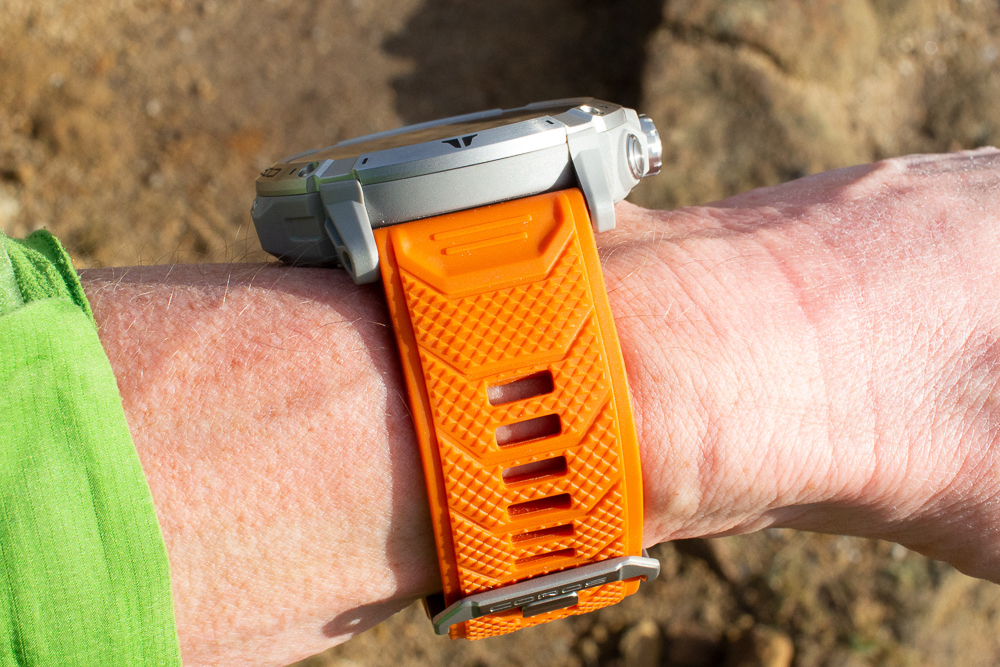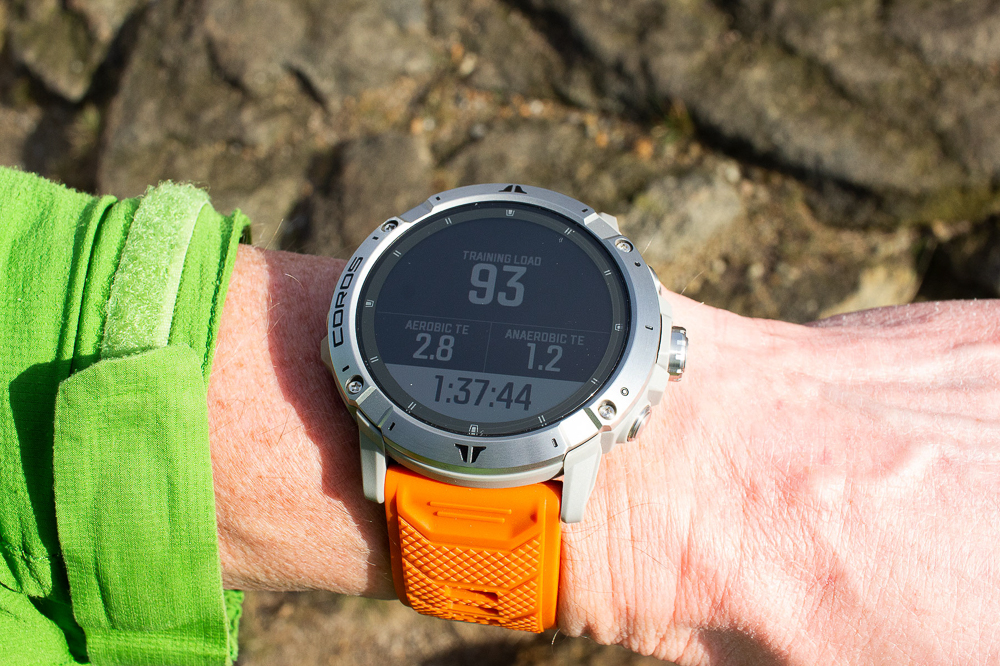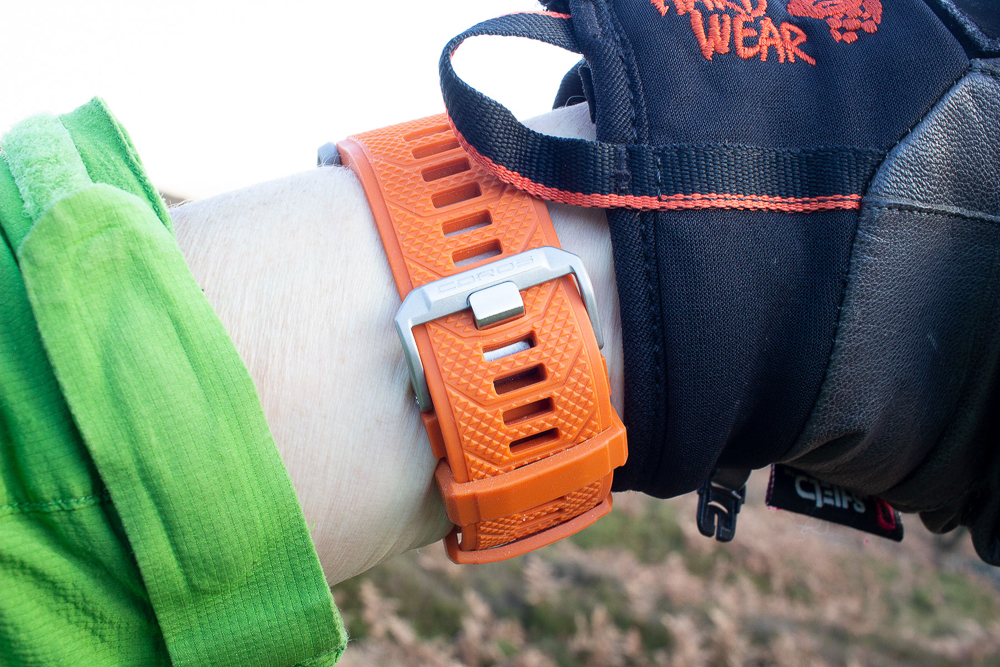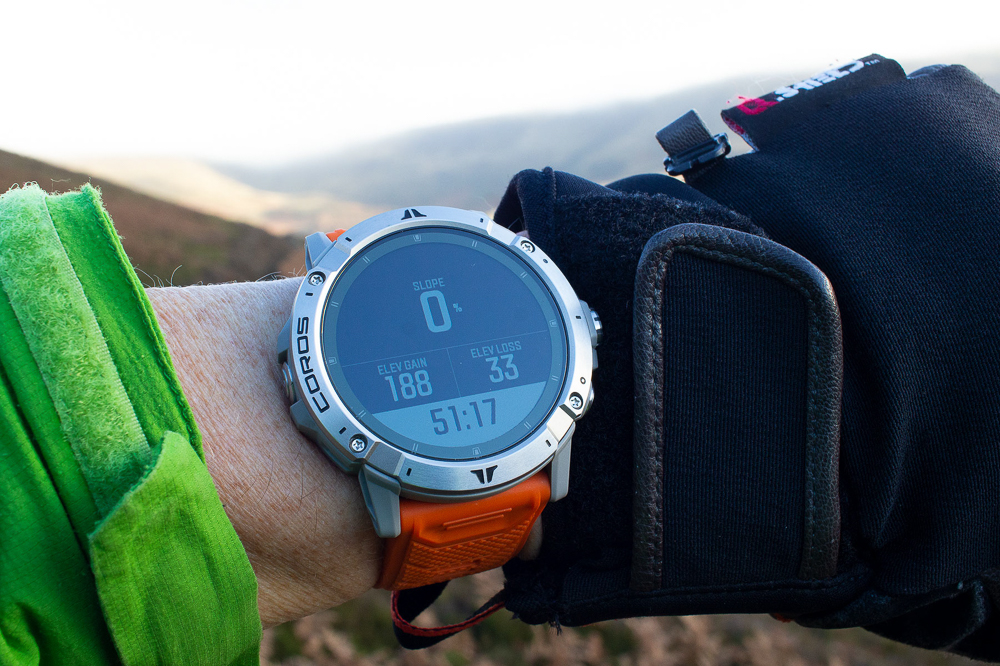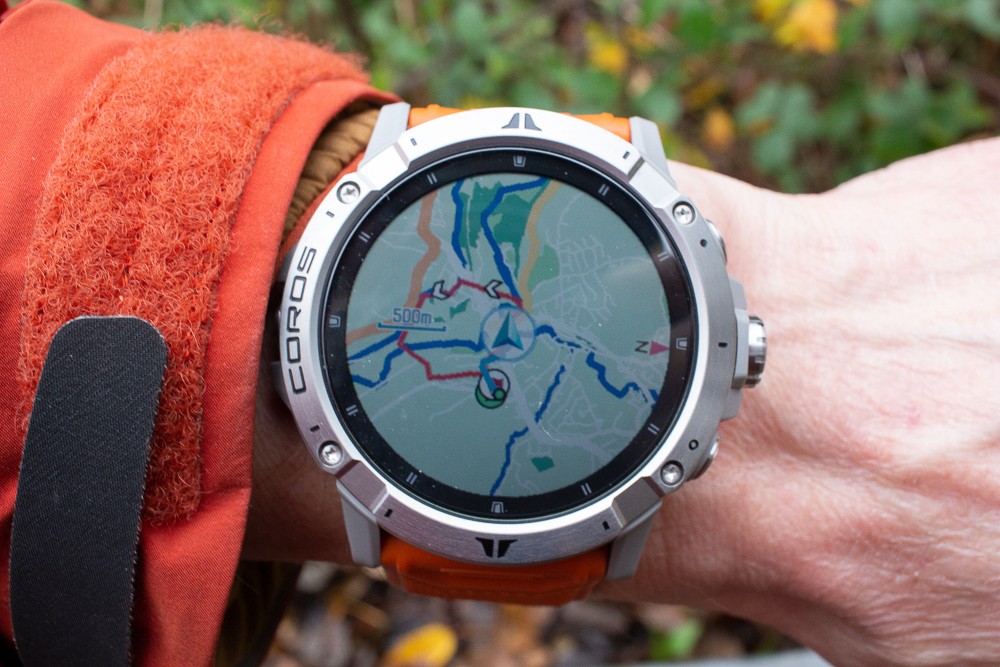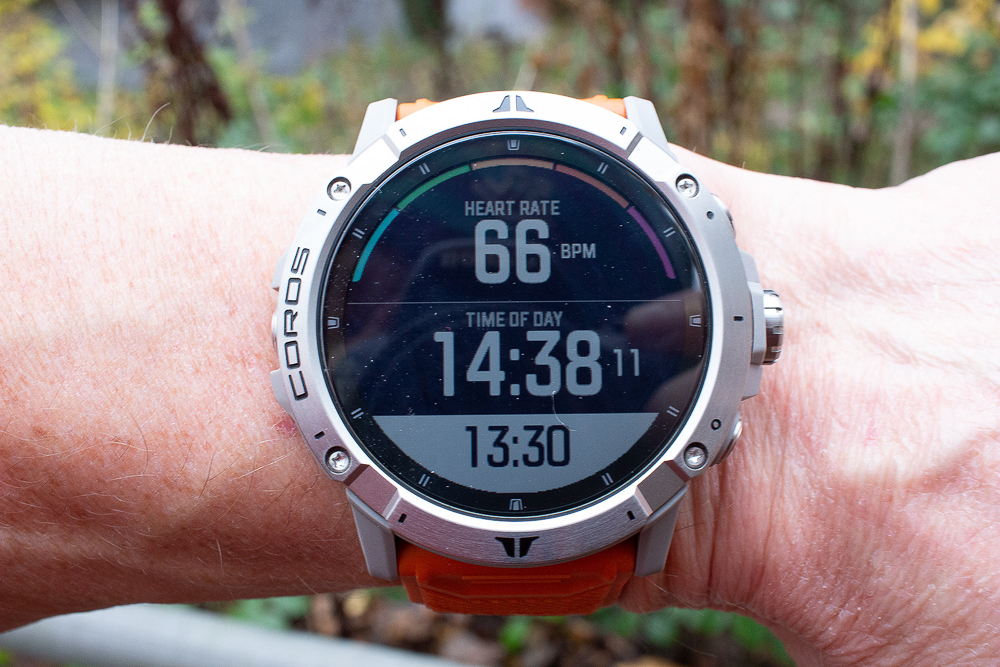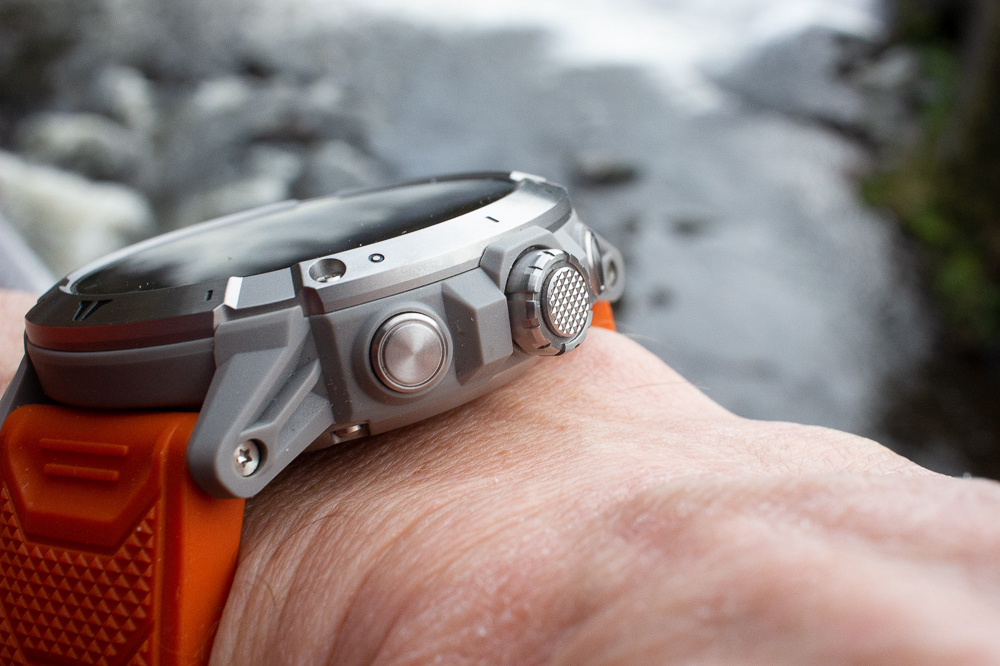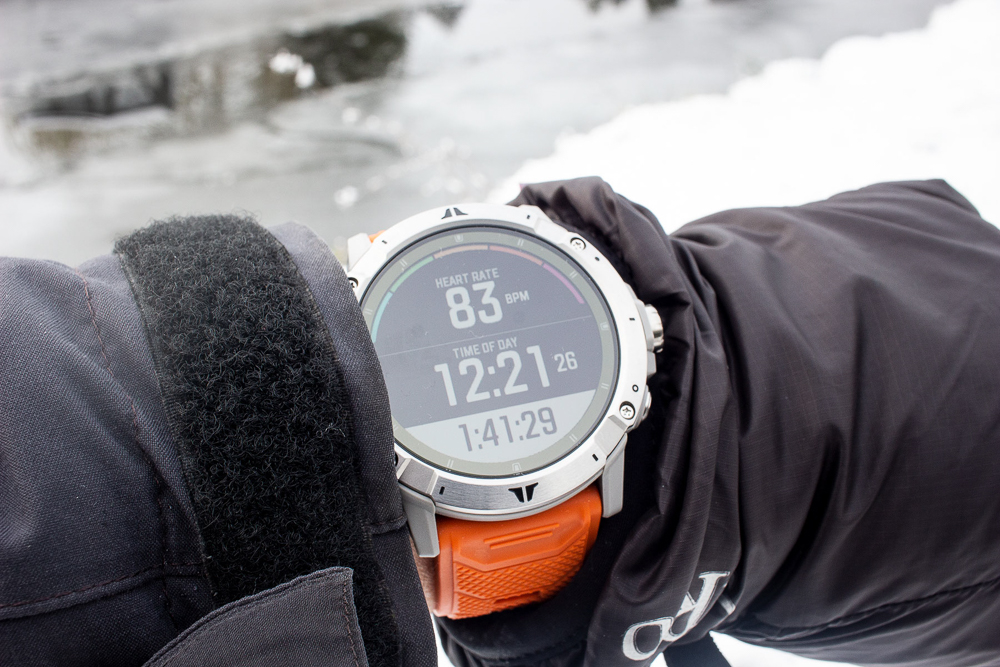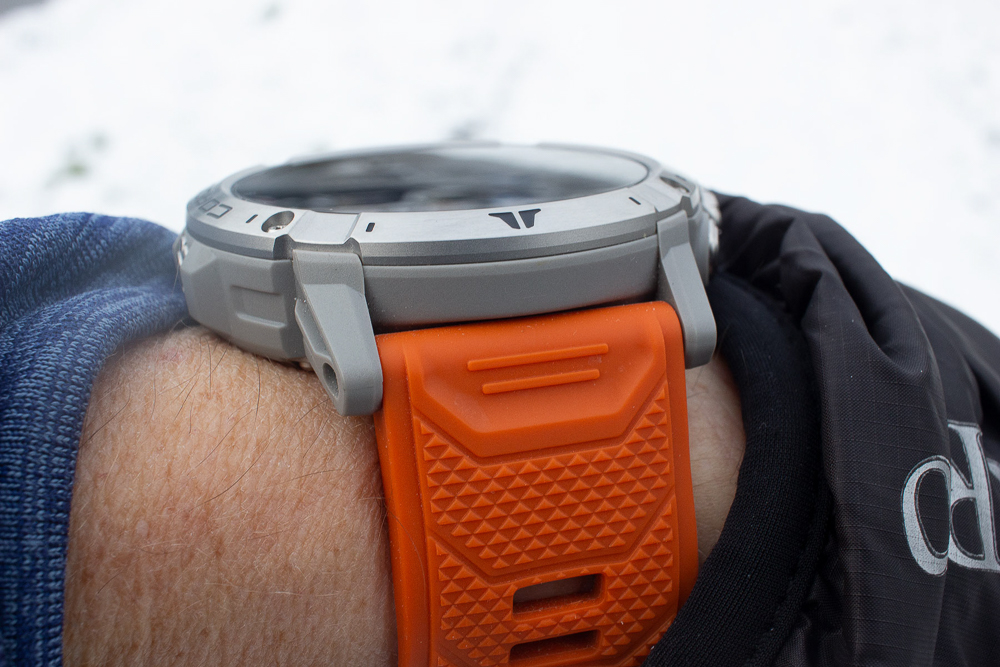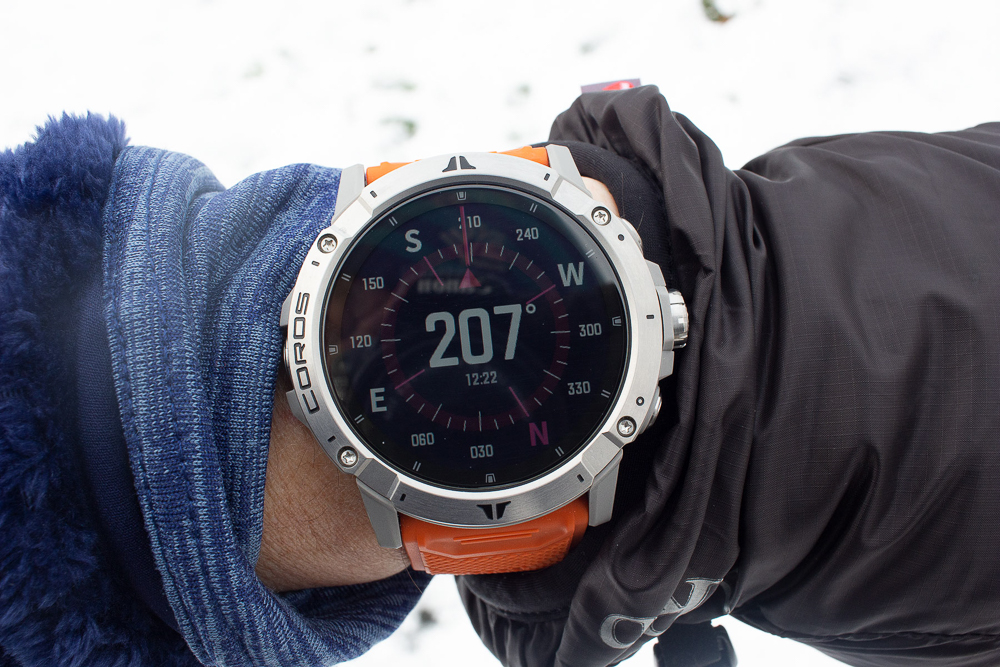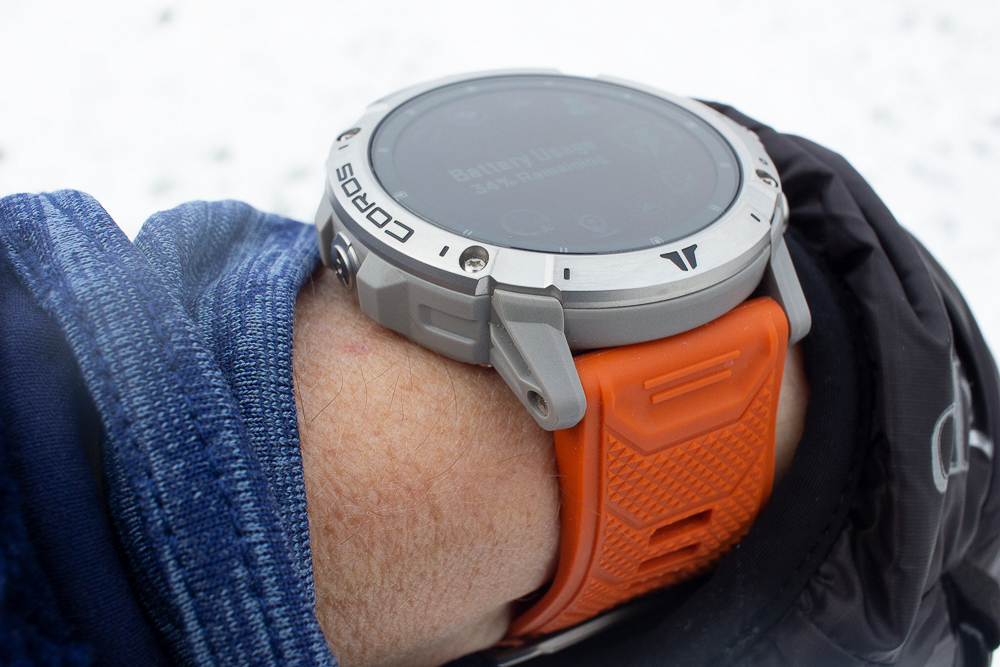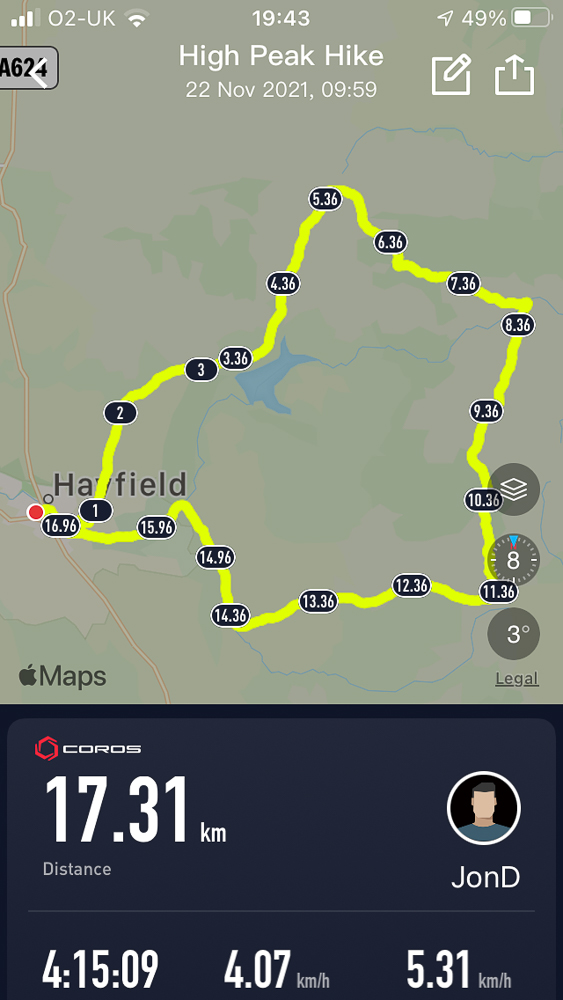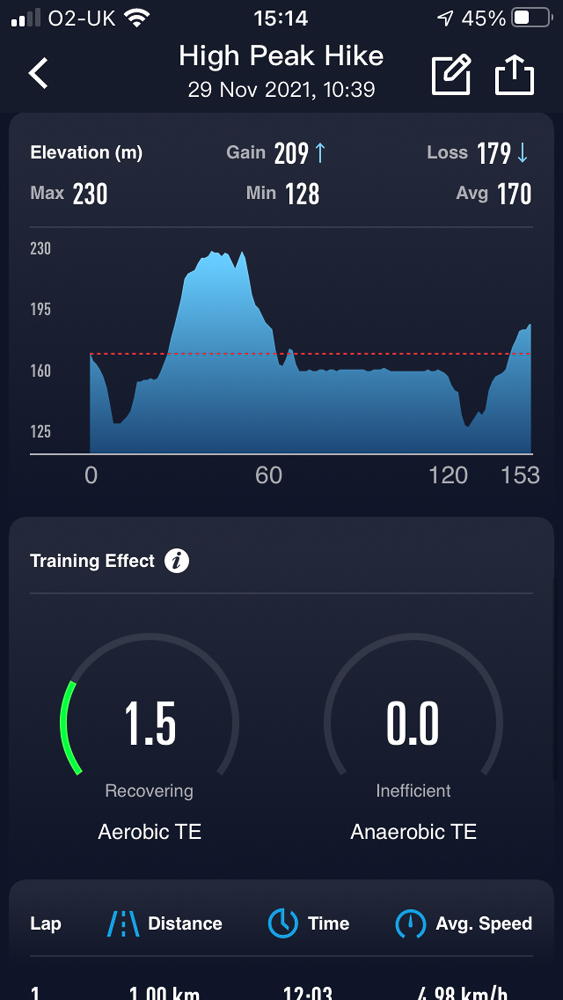Jon Doran reports on the latest outdoors GPS watch from COROS
Digital cards on the table, I found the COROS VERTIX 2 both impressive and slightly frustrating. It does some things incredibly well and others, not quite so adeptly.
Perhaps that’s not altogether surprising as it combines an awful lot of functionality in its titanium-sandwiched watch-shaped body. For starters it’s a multi-channel GPS tracker and navigational unit with built-in colour mapping and the capability to talk to five different satellite systems. On top of that it can also be used as a general body-tracking device complete with heart rate, bloody oxygen saturation and sleep monitor functions. And it works as a general smartwatch allowing you to view phone alerts on your wrist and yes, even tell the time.
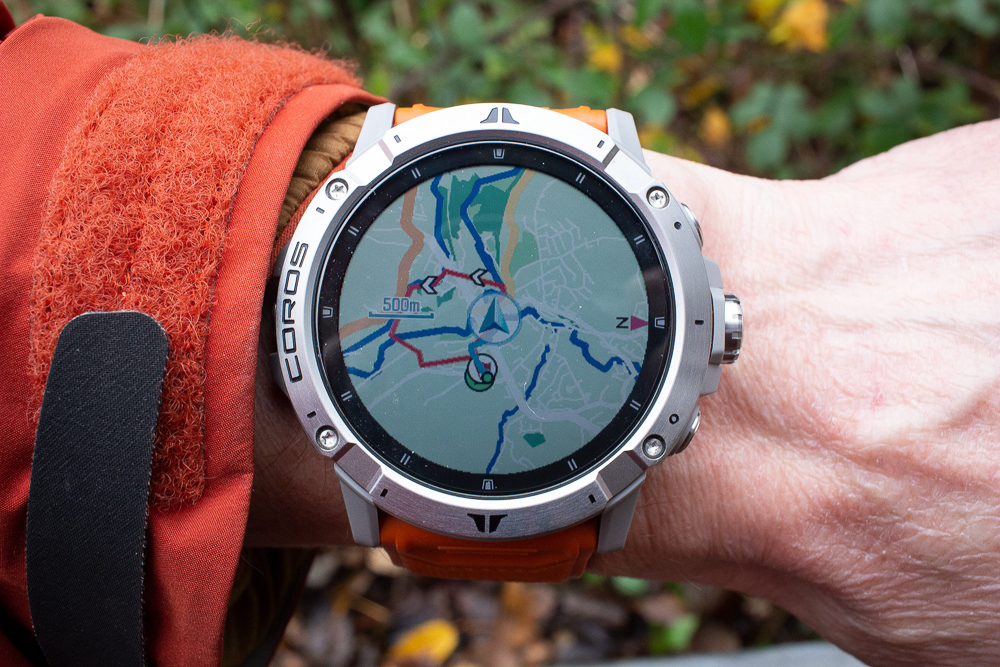
VERTIX 2 has a high resolution colour screen that’s ideal for displaying mapping
NAVIGATION
For walkers, climbers and mountaineers, it’s the navigational stuff that’s probably most useful. You can upload a GPX route file to the watch then follow it using a breadcrumb trail on a full colour, zoomable map on your wrist. If you deviate from the route, the watch will alert you. The mapping’s clear enough and easy to view, but there are no turn-by-turn instructions and the mapping currently doesn’t feature place or feature names, so while big features like lakes or water courses are handy, you’re effectively using what I think of as ‘keyhole navigation’.
You can only see the mapping while you’re following a pre-loaded route, which is fair enough as it’s pretty useless without the breadcrumb trail. Once you’ve finished your outing you get a selection of data on the watch which you can then synch with the COROS app on your phone. This is where things get slightly clunky. If you want to send your route to an app like Strava, you have to first export a file to your phone or computer and then manually upload it to your chosen app.
That’s frustrating because many competing devices will automate the whole process. Importing a route to the watch from a planning app is similarly clunky. Using the GPS in standard mode worked fine with rapid start-up and decent accuracy. If you want even more precision, you can choose to combine data from multiple satellite systems at the expense of reduced battery life.
Speaking of which, the VERTIX 2 is particularly impressive when it comes to eking out power. COROS quotes 140 hours of use in standard GPS mode, which is almost six days of continuous use. I charged it once at the start of a three-week test period and that was enough for daily use and multiple outings. No complaints there.
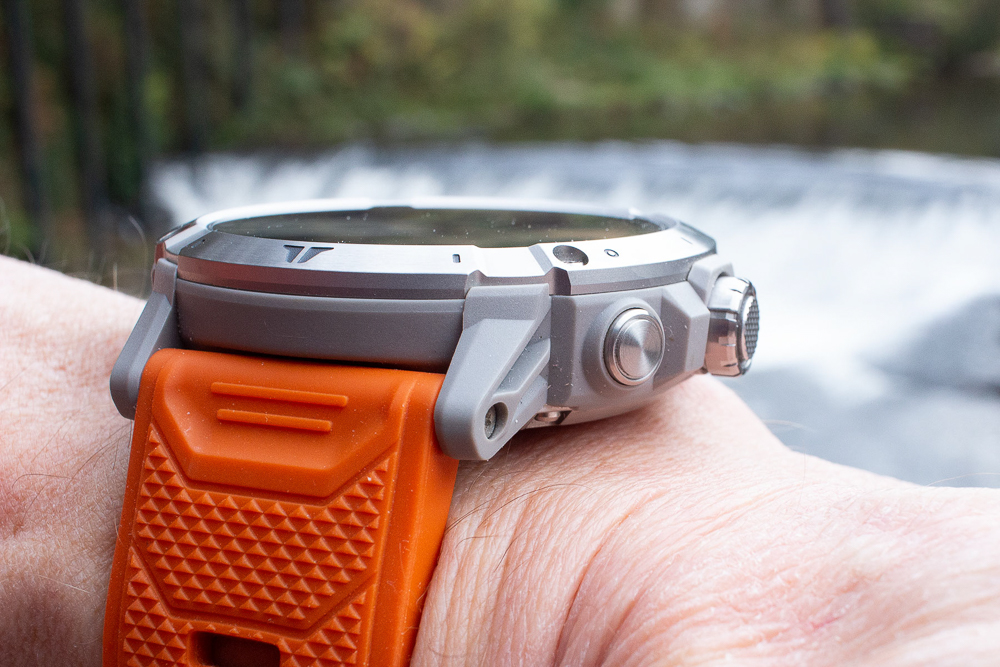
The VERTIX 2 is quite chunky, but not any more so than other GPS watches
IN USE
Other considerations in an outdoor environment are the sheer size of the unit (though it’s no chunkier than its rivals from Garmin and Suunto) which doesn’t alway mix well with longer winter gloves and layered cuffs and on more technical terrain, a nagging worry about scragging a £600 smartwatch against a rock hold. COROS does sell a carabiner mount, so you can simply clip it to a gear loop, and this is a neat solution for climbers, and in fact the VERTIX 2 includes a Multi-Pitch mode which makes full use of the watch’s dual satellite tracking – you can see an explanation of this HERE. Weight by the way, is around 91g, about the same as a Garmin Fenix 6 and around 30g less than a conventional Elliot Brown timepiece.
Speaking of gloves, the two simple control buttons were fine with light to medium ones, though faffy with full winter gauntlets. It helps that the user interface is generally straightforward and reasonably intuitive with the app giving plenty of customisation options.

One area where the VERTIX 2 seems to overpromise is in heart rate monitoring. It’s not alone in this, wrist-mounted HR monitors are often slightly random, particularly if the watch isn’t snugly fitted, but in back to back tests with a Wahoo chest strap the COROS was slightly laggy and sometimes just wildly out. If that bothers you, you can always bluetooth it to a separate HR strap.
Also the touted ‘ECG capabilities’ amount to a far less technical ‘well-being’ measure of heart rate variability (HRV). Compared to the ithlete smartphone app it seems less nuanced and would mostly tell me I was at 100% unless I was clearly trashed, in which case I knew that already.
That said, if health/fitness tracking is your thing, the watch will do that and scrolling through from the customisable watch face screen gives daily scores for calories burned, steps, floors, HR, recovery and more though some of these only come into play if you run. It also tracks sleep if you choose to wear it overnight, but I found the watch too obtrusive for that.
You can also take things a stage further and use the watch to plan and follow training workouts and training plans across a variety of sports, but with a primary focus on running. There’s also a system called EvoLab which will give advanced metrics relating to training load and fatigue. In all honesty, those are beyond my pay grade and serious athletes will no doubt be doing their own extensive research.
One further feature that could be useful to mountaineers and high altitude trekkers in particular is the ability to measure blood oxygen saturation and, in particular, to calculate what it terms ‘altitude performance’ from 2500m upwards. At Peak District levels, the figures we saw were comparable with a separate finger-based oximeter, so it could be an interesting tool higher up.
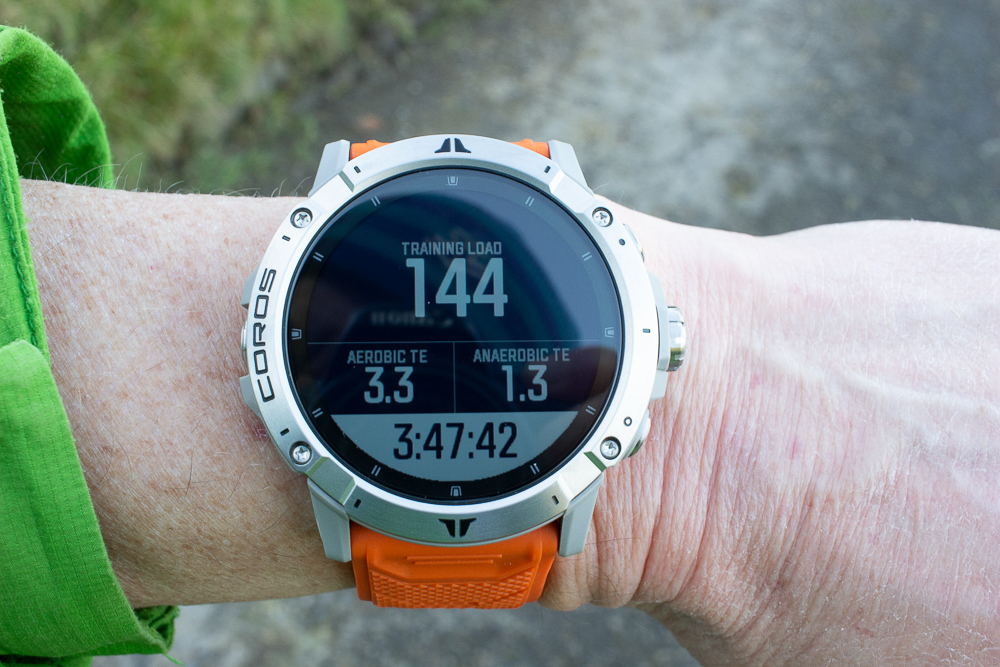
There’s no shortage of data to display on the VERTIX 2’s screen
SUMMARY
There’s plenty to like about the VERTIX 2, in particular the battery life is excellent and would work well on extended trips. It churns out a wealth of activity data for body-hacking geeks and the user interface is intuitive enough that I rarely needed to check the manual. And while there are no turn-by-turn directions, the zoomable mapping is decent enough and breadcrumb trails keep you on the right course.
It’s a shame that integration with other apps is lacking and in particular transferring routes and activity files to and from the watch could be made a lot slicker. I also found the heart rate functionality a little disappointing given the high price of the watch. Bear in mind though that some of those issues could well be fixed by software tweaks going forward.
More info: https://uk.coros.com/vertix2/


